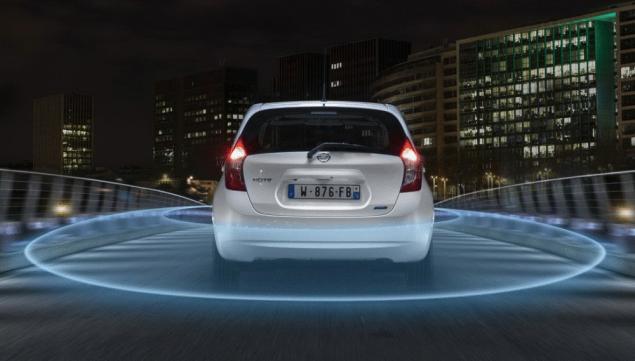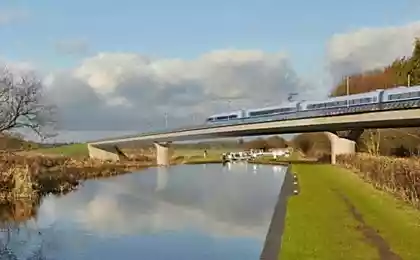610
Autonomous vehicles: the consumer wins either way

Companies developing self-driving cars, and you can hand control over to our friends on wheels is a very good decision. Once behind the wheel sits a robot, the number of accidents will decrease. Freed from the need to keep hands on the wheel and eyes on the road, drivers will have more time to work, leisure and communication with loved ones. We are freed from archaic models of family cars. And not waste so much time searching for a Parking space.
Even senior regulators acknowledge that the emergence of self-driving cars will provide "completely new possibilities to improve road safety, increase environmental benefits, expanding mobility, and sozdadut new economic opportunities for work and investment".
The idyllic picture painted by automakers and regulators, it may seem exaggerated, but the latest report by McKinsey & Company shows that for the most part it is true.
Automakers expect to introduce Autonomous technologies in several stages, gradually rolling new and exciting opportunities that are inaccessible to ordinary vehicles. In three to five years we can expect the emergence of vehicles that will be hard to try during traffic jams and cruise on the track, but to lose the control of their opponents. In addition, there will be complex problems of management of vehicles in urban areas where there are obstacles like pedestrians, motorcyclists, offenders, and the like. In the next 25 years our cars will be incredibly Autonomous and fully Autonomous by 2040.
We are on the right track. A fleet of self-driving cars Google is already hitting over a million kilometers without a single incident. At the beginning of this year and Audi has tested its prototype from Silicon valley to Las Vegas. Last week, Mercedes-Benz drove their conceptual roboauthor in San Francisco.
The McKinsey report, based on research by McKinsey analysts and interviews with industry experts, divides the development into three phases. In the first, which will last until 2020 or so, the influence of Autonomous technology will be limited: while the robotic devices are already working in industrial and controlled environments like farms and mines, public transport will remain in the testing phase and prototyping. Plans Mercedes and Nissan who want to produce Autonomous cars by 2020, is not true. Audi takes aim at the same time as the Volvo, but the cars under their production would be difficult to call self-managed.
The main growth technology is expected to take place between 2020 and 2035 years, then the technology will be mainstreme. This, in turn, will require the creation of regulatory bodies worldwide, which will develop comprehensive rules for development, verification, production, operation, approval and licensing of such vehicles. Insurance companies will also have to rework its basic model so that the manufacturers could insure themselves against technical failures. The wide spread of technology will lead to chain reactions on all branches. Small repair shops will become less common, remote diagnostics, more, fewer accidents — less repair. Uber drivers will become unnecessary. Truckers, too.
Meanwhile, users will start to get used to the idea of failure from the steering control, and they will begin to like it. The security benefits will gradually come to the foreground, and full autonomy will gradually be included in Insurance Institute for highway safety (IIHS) reported a seven percent reduction in accidents among cars that have basic collision avoidance the rear of preceding traffic. Add to that the automatic braking, and this number will increase to 14-15 percent, according to Consumer Reports. More self-driving cars means a large reduction in the number of accidents, so offline features are an important item in the plan of Volvo to reduce deaths and injuries on the roads among cars by 2020.
After 2040

In the third phase, after 2040, the fun begins. This is the moment when Autonomous cars will be our primary transportation and when all the rules have to be established. Just as the design of the car will change in terms of looking at each other seats, the lack of mirrors and pedals, as well evolyutsioniruet and structure of physical space. McKinsey predicts that by 2050, we will use 25% less Parking space. In total that's a lot. Autonomous vehicles can impact themselves to staff at the Parking place (space for exit of the driver to write would not make sense).
Moreover, our entire idea of car ownership may change. Currently, the cars are idle 95% of the time. This time can be used with advantage.
We will not stop buying cars — people will still want to "manage it independently and enjoy it" — but we buy less. Without having to have a driver, a single Autonomous vehicle can take the place of two ordinary vehicles. If someone is going to play Golf, and someone needs to store one car can get there and back, on the way to time to collect and breed all. Perhaps there will be a service that will map the distribution of customers for a fee.
McKinsey believes that the consumer wins anyway. Yes, the car scored high technologies, there are not a few thousand dollars. But drivers will save money in the form of time saved (will work, but not to ride) and fewer accidents. McKinsey predicts 90% fall in the number of accidents.
Economic benefits at the expense of productivity difficult to calculate, so it McKinsey doesn't offer these data. In the end, there is no guarantee that people will use their cars for work and not for sleep, rest, travel or watching movies. But the overall Outlook in General, is clear: we will be better in a world where we didn't drive.published
Source: hi-news.ru























